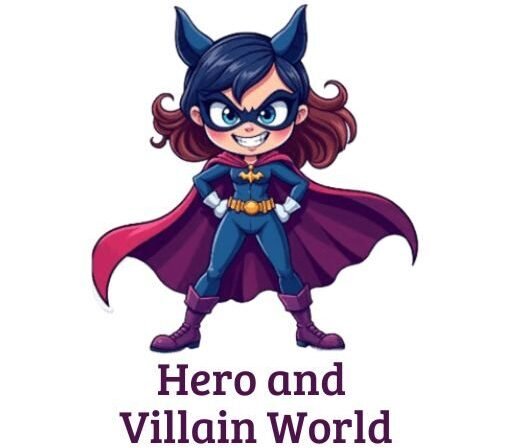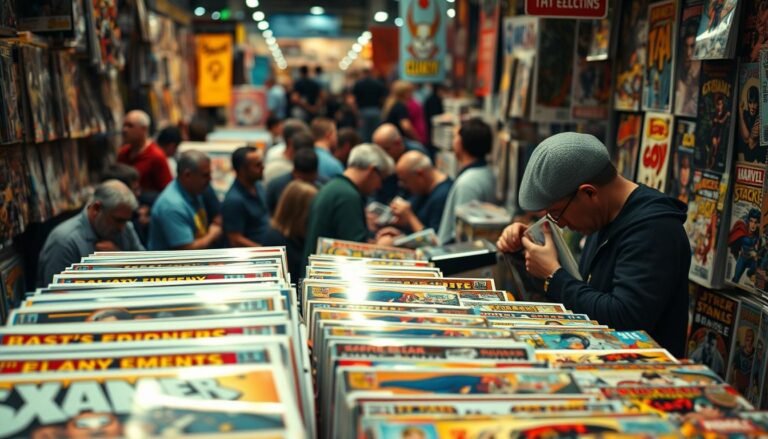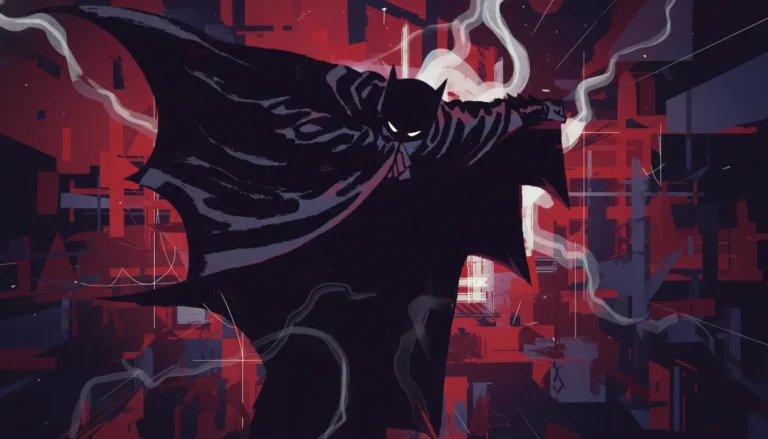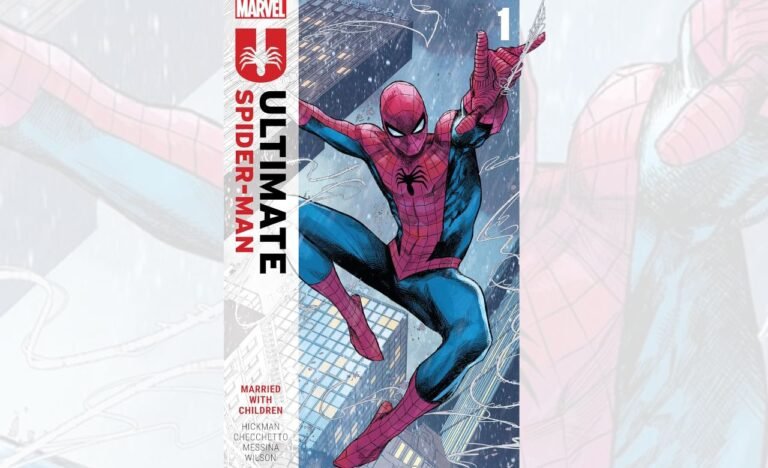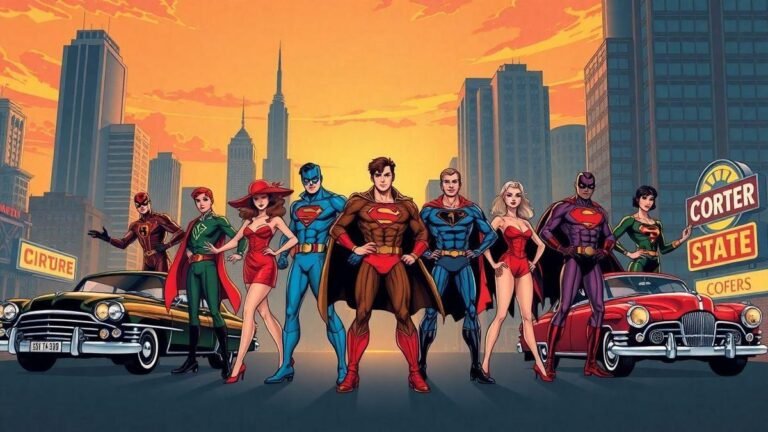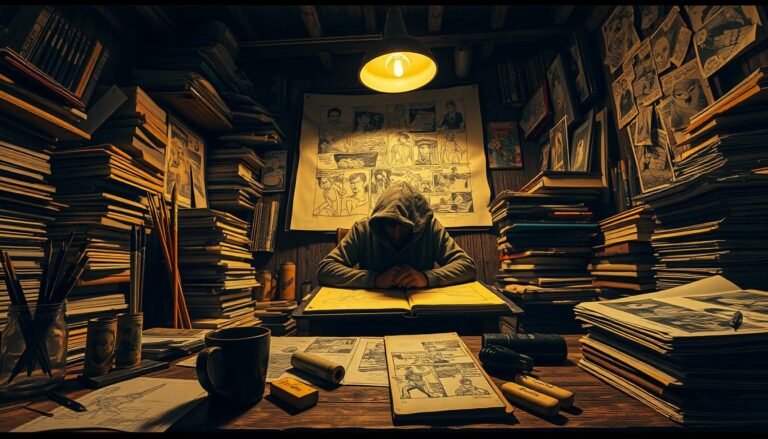Thor: From Asgard to Earth’s Mightiest Hero
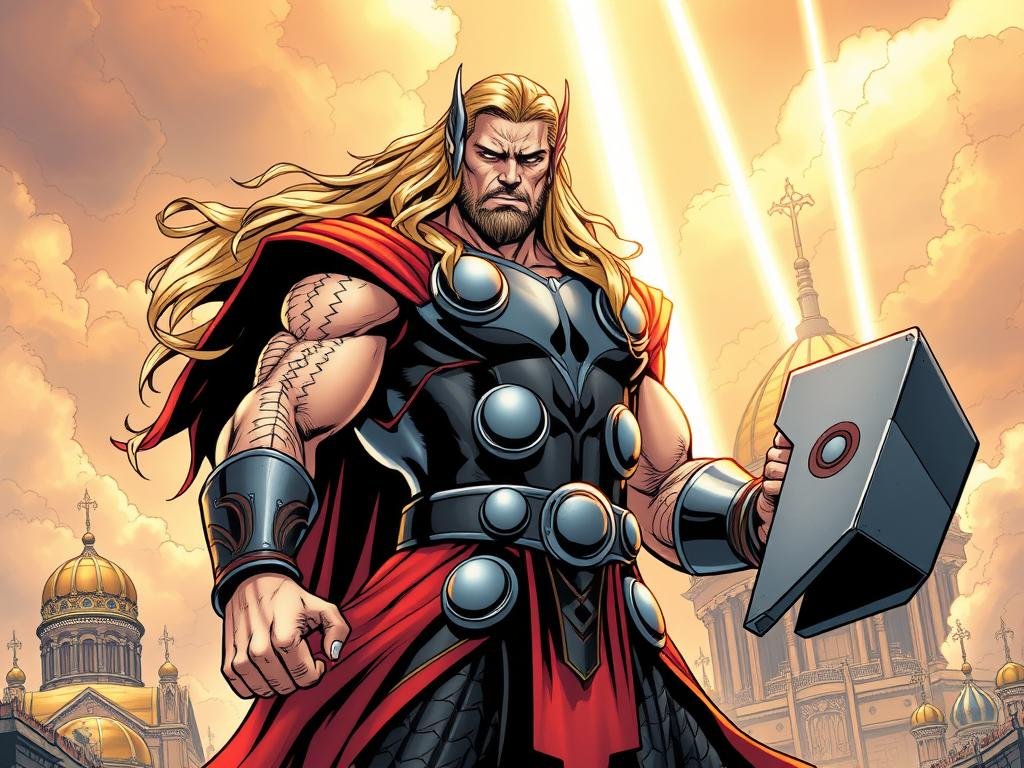
I’ll never forget the first time I held a Marvel Comics issue featuring Thor. The weight of his hammer, Mjolnir, wasn’t just a weapon—it symbolized a bridge between ancient myths and modern heroism. A
s a kid, I marveled at how a Norse god could feel so relatable, so human. That’s the magic of his story: a deity learning humility while defending worlds.
What captivates me most is his duality. He’s a ruler of Asgard, born to wield lightning, yet he stumbles, grows, and fights alongside mortals.
Stan Lee and Jack Kirby didn’t just create a superhero—they reimagined a mythic figure for readers craving depth. His journey isn’t about power; it’s about earning it.
Through decades of comics, Thor’s evolution mirrors our own struggles. His clashes with Loki aren’t just battles—they’re lessons in loyalty and leadership. And when he lifts Mjolnir, it’s not just strength we see, but worthiness.
This article isn’t just about a character. It’s about how a god became a guardian, a king became a teammate, and why his story still strikes like thunder in our hearts.
Writer Jason Aaron and legendary artistic collaborators including Esad Ribic and Russell Dauterman begin a truly epic saga of Thor — whoever he or she may be! Across the ages, gods are vanishing, and Thor must unite with his past and future selves to stand against Gorr the God Butcher! Meanwhile, Malekith the Accursed begins a bloody rampage that will spread war throughout the realms. Which makes it a terrible time for the Odinson to be rendered unworthy of lifting Mjolnir! Another hero will hold the hammer high, fighting for Asgard and Midgard as Thor — the Goddess of Thunder! She’ll battle Malekith, Loki, Roxxon…and even Odin! But who is she under the mask? And what is this new Thor’s terrible secret? Collecting THOR: GOD OF THUNDER #1-25, THOR (2014) #1-8, THOR ANNUAL (2015) #1, THORS #1-4 and MIGHTY THOR (2015) #1-12.
Getting to Know Thor: My Personal Introduction
My introduction to Thor wasn’t just reading a comic—it was stepping into a myth. I found an old issue at a flea market, its pages worn but vibrant.
There he stood: a golden-haired warrior, hammer raised, lightning crackling. Unlike Iron Man’s tech-driven brilliance or Captain America’s wartime grit, Thor’s power felt primal, yet deeply human.
What struck me most was his duality. He battled frost giants one moment, then shared laughs with complex heroes the next. Jane Foster’s presence added warmth—a mortal who saw beyond his godhood. Her courage, especially when taking up Mjolnir herself, reshaped how I viewed heroism.
Reading those stories, I realized Thor wasn’t just bridging realms—he was merging ancient honor with modern struggles. While Tony Stark built suits and Steve Rogers carried a shield, Thor carried centuries of legacy. And somehow, that made him more relatable.
Ever lifted a book and felt its weight shift your perspective? That’s Thor’s magic. He’s not just a hero—he’s a doorway to myths that still whisper truths.
Thor: From Asgard to Earth’s Mightiest Hero
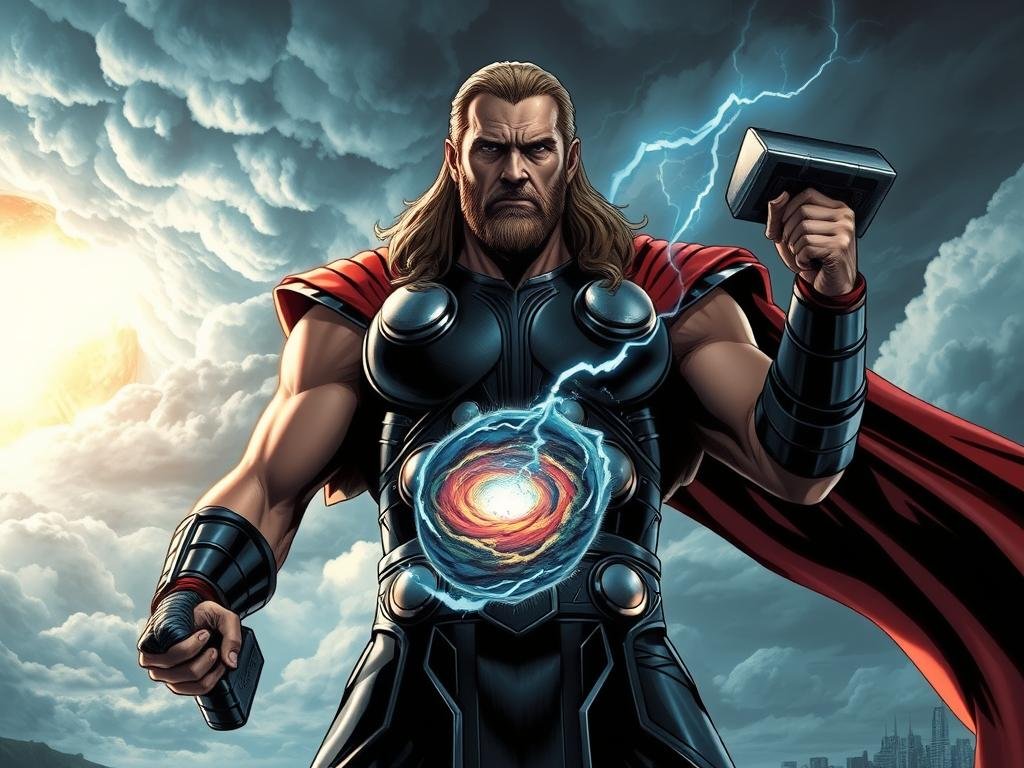
When I first saw Beta Ray Bill wielding a hammer like Thor’s, it flipped my understanding of heroism. Here was an alien warrior deemed worthy—proof that leadership isn’t about birthright, but grit. Their rivalry-turned-respect arc taught me heroes aren’t born; they’re forged through shared battles.
What cements his place among Earth’s mightiest heroes isn’t lightning or strength—it’s adaptability.
Working with Black Panther against threats like Malekith, he traded Asgardian pride for teamwork. Watching a god strategize with a Wakandan king? That’s when myths become mentors.
His legacy thrives in quiet moments too. Remember when he surrendered Mjolnir to Jane Foster? Or stood guard while Beta Ray Bill led the charge? True power lies in knowing when to step back—a lesson many armored heroes still learn from him.
Want to see thunder meet tact? Dive into his clashes with Surtur or alliances with Black Panther. Every page whispers: titles aren’t given. They’re earned—one earth-shaking choice at a time.
Exploring Thor’s Origins in Asgard
The first time I delved into Asgard’s lore, I realized his story was etched in myth long before comics.
Ancient Norse poems like the Prose Edda painted him as a storm-bringer—a protector who wrestled sea serpents and outwitted giants. Marvel reshaped these legends, blending Viking reverence with modern heroics.
Norse Mythology and His Early Life
In myths, he wasn’t just Odin’s son—he was a symbol of resilience. I loved how Marvel kept his history intact: training alongside warriors, clashing with frost giants, and learning humility after reckless battles.
His bond with Loki felt ripped from sagas where sibling rivalry could unravel realms.
Key Aspects of the Asgardian Realm
Asgard’s golden spires weren’t just scenery. They reflected a society built on honor, where the Sif Warriors Three tested his leadership. Remember when the Wrecking Crew invaded Midgard? Those brawls mirrored ancient conflicts, proving even gods need mortal allies.
What stuck with me was the Beta Ray connection—a nod to mythic trials where worthiness mattered more than bloodline. Like Viking heroes earning their place in Valhalla, Thor’s journey reminds us: legacy isn’t inherited. It’s forged.
My Experience with Thor’s Powers and Equipment
Holding Mjolnir’s replica at a comic con years ago, I finally grasped its symbolic weight. This wasn’t just a prop—it carried centuries of myth and meaning. Every dent in its uru metal surface whispered stories of battles fought and storms summoned.
The Magic of Mjolnir and Thunder
When I first saw Thor summon lightning in Avengers #12, the page practically crackled. Mjolnir’s enchantments—like creating cyclones or detecting illusions—aren’t party tricks.
They’re extensions of his identity. Its “worthiness” clause? More than a gimmick. It’s a narrative thread tying modern heroism to ancient Viking trials.
What stunned me was its planetary-scale weather control. Rain, blizzards, even tidal waves bend to his will. Yet he’ll pause mid-battle to shield civilians—proof that power without compassion is just noise.
Weather Manipulation & Combat Mastery
His belt of strength and flight capabilities? Cool, but it’s the golden apples of Idunn that fascinate me. They fuel his immortality, letting him push neutron stars or hold skyscrapers. Unlike heroes relying on tech, his might flows from mythic roots.
Comparing him to Beta Ray Bill sharpens this. Both wield hammers, but Thor’s bond with storms feels primal. When Bill took up Mjolnir temporarily, it highlighted Thor’s unique legacy: a god who chooses mortality’s messiness over distant divinity.
Every lightning strike isn’t just power—it’s poetry. And that’s why his hammer’s echo still thunders in our collective imagination.
Discovering Thor’s Epic Battles
Reading Thor’s clash with Surtur at 2 AM, flashlight under the covers, taught me what real stakes looked like. The pages practically sizzled as flames engulfed Asgard’s skies. That’s when I realized: his greatest strength lies not in winning, but in rising after every fall.
Defending Asgard and Earth
One moment stays burned in my memory: his duel with the Destroyer in Vietnam. The machine liquefied entire city blocks, yet he stood firm—hammer raised, lightning crackling.
“Is this the best you can muster?” he roared, echoing panels I’d later trace with my fingertips. That battle wasn’t just about power—it was about perfect timing, striking before the Destroyer’s molten gaze could incinerate allies.
Then there’s the Frost Giants’ assault on Midgard. I held my breath as he shattered Jotunheim’s ice bridges mid-charge, buying Earth precious seconds. His alliance with Black Panther against Malekith? Pure genius. Watching a god strategize with a king taught me teamwork trumps raw might.
But nothing tops his final stand against Thanos. Even battered, missing an eye, he channeled storms that lit up entire galaxies. My hands shook turning those pages.
Because here’s the truth: every earth-shaking battle whispers the same lesson. Victory isn’t guaranteed—it’s earned, one thunderous heartbeat at a time.
“A king fights not for glory, but for those who cannot.”
These clashes didn’t just shape comics—they rewrote how I face my own storms. When life throws a Destroyer my way? I hear Mjolnir’s echo: strength isn’t the hammer. It’s the hand that wields it.
Thor’s Filmmaking and Comic Book Legacy
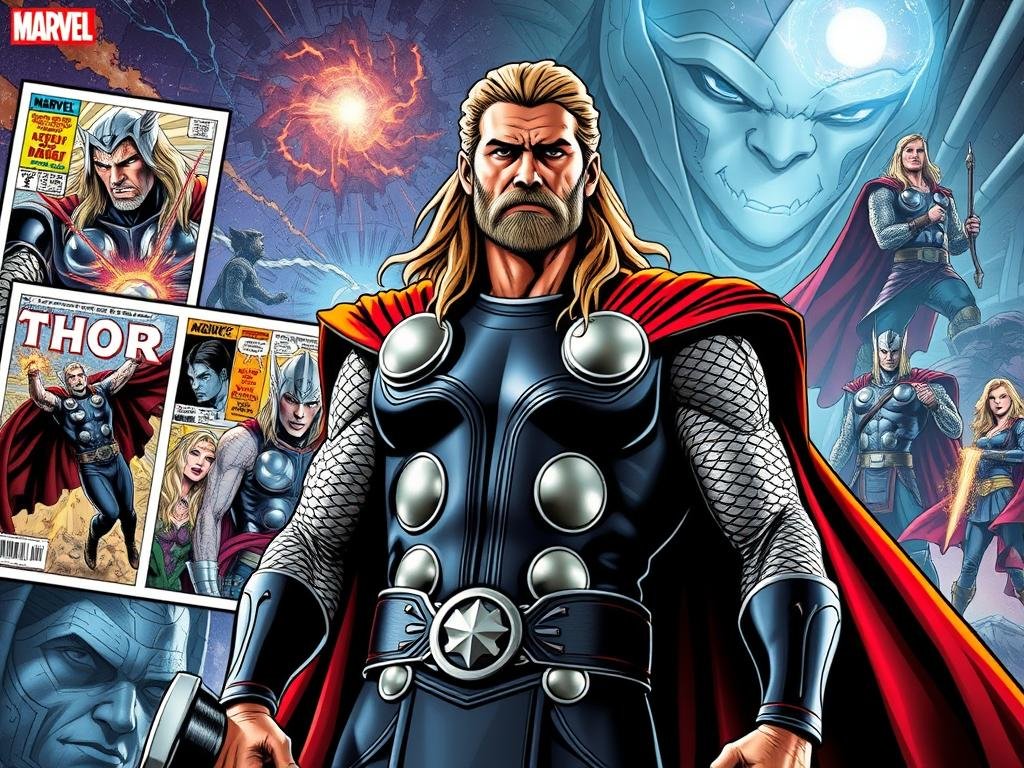
Watching Thor leap from comic pages to blockbuster films felt like witnessing a myth reborn. The series that began in 1962’s Journey into Mystery #83 didn’t just introduce a hero—it crafted a blueprint for merging ancient lore with modern stakes.
Those early published Marvel Comics pages, splashed with Jack Kirby’s cosmic art, taught me how gods could feel human.
What fascinates me most is how creators like Walter Simonson redefined the comic landscape. His Mighty Thor run blended Viking grandeur with sci-fi spectacle—a formula later mirrored in films like Ragnarok.
When Jason Aaron’s God Butcher arc explored Thor’s vulnerabilities, it proved even deities need emotional depth to resonate.
The leap to cinema wasn’t just about CGI hammers. It honored decades of storytelling DNA. Remember Loki’s mischief echoing his 1963 debut? Or Jane Foster’s heroism mirroring her 2014 comic rise? Every frame nods to ink-and-paper roots.
“Great stories aren’t told—they’re rebuilt for each generation.”
Today’s MCU battles against Thanos or Gorr owe their soul to those early panels. So grab a classic issue or rewatch Love and Thunder. Whether through Kirby’s bold lines or Taika Waititi’s humor, one truth remains: legends evolve, but their thunder never fades.
Building the Avengers with Thor
Witnessing the Avengers assemble for the first time felt like watching lightning split the sky—sudden, electric, and impossible to ignore. In those early Marvel Comics issues, seeing gods and geniuses unite under one banner redefined what heroism meant.
Thor didn’t just join a team; he became its mythic anchor, grounding cosmic stakes in human resolve.
Forming the Team and Dynamic Roles
What struck me was how each member filled a unique niche. Iron Man’s tech brilliance offset Hulk’s raw power, while Thor’s ancient wisdom balanced Captain America’s tactical grit.
Their 1963 debut against Loki wasn’t just a battle—it was a blueprint. I still get chills recalling how Thor’s hammer cracked the sky, signaling the birth of Earth’s mightiest group.
Memorable Team Battles and Moments
The Kree-Skrull War arc showed their true mettle. Thor’s storms shielded allies as Scarlet Witch rewrote reality—a dance of chaos and control.
But it was quieter scenes that stuck with me: Thor passing Mjolnir to Iron Man mid-battle, trusting a mortal to wield divine power. That’s when I realized—trust was their secret weapon.
“Avengers Assemble!” isn’t a call to arms. It’s a promise—that no one fights alone.
Years later, rewatching their animated clash with Ultron, I saw the same spark. Every repulsor blast, every thunderclap, wove a tapestry of unity. Heroes rise and fall, but the Avengers? They remind us that even gods need friends.
Unraveling Thor’s Relationships and Allies
What makes a god relatable? For me, it’s always been Thor’s tangled web of loyalties. His bond with Loki—brother by oath, rival by design—taught me that family isn’t always blood.
Their clashes in Ragnarok weren’t just about thrones; they revealed how envy and love can coexist in a single glance.
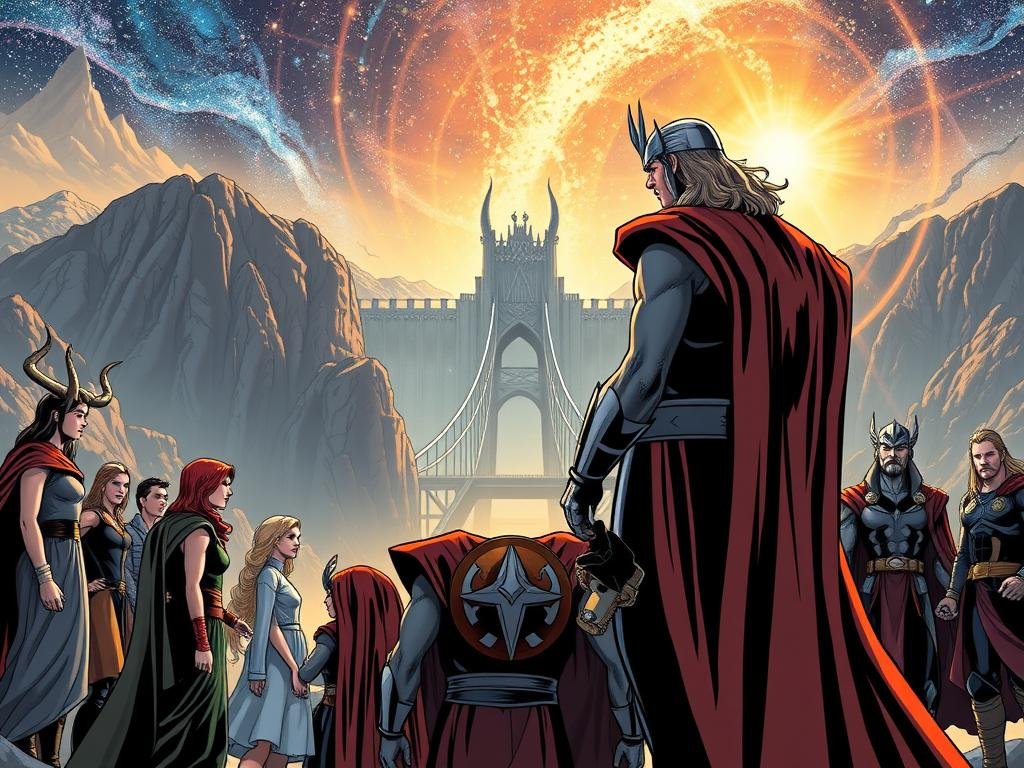
Watching him work with allies like Jane Foster reshaped my view of teamwork. When she lifted Mjolnir in Love and Thunder, it wasn’t just power-sharing—it was trust personified. Even his goats, Tanngrisnir and Tanngnjóstr, felt like silent partners in his journey.
But the real magic lies in quieter moments. Like when he stood beside Beta Ray Bill against galactic threats, their hammers singing in unison.
Or his reluctant alliance with Malekith’s enemies during War of the Realms. These aren’t just plot devices—they’re lessons in finding common ground.
“Trust is the sharpest blade in any realm.”
Off the battlefield, his bond with Sif showed how warriors can nurture peace. Their shared laughs between battles reminded me: even gods need friends who see past their titles. Every alliance, every rivalry—they’re threads in a tapestry proving heroism thrives on connection, not isolation.
Thor in Other Media: My Personal Take
There’s something electrifying about hearing Thor’s voice boom through animated series—a blend of mythic grandeur and modern flair that comics alone can’t capture.
Rick D. Wasserman’s performance in The Avengers: Earth’s Mightiest Heroes nails his essence: regal yet approachable, like a king who’d share mead with mortals.
Animated Series Highlights and Impact
These adaptations amplify his abilities visually. Lightning arcs across screens with crackling energy, and his armor gleams with intricate Asgardian details.
Watching him battle Ultron or Loki in animated form feels like seeing Jack Kirby’s art leap into motion—dynamic and unapologetically bold.
What surprised me? How shows like The Super Hero Squad balanced humor with heroism. Even in a cartoonish style, his loyalty to allies like Beta Ray Bill shone through. The streamlined armor designs kept his iconic look while adapting to lighter tones—proof that core traits transcend art styles.
| Aspect | Animated Series | Comics |
|---|---|---|
| Voice Performance | Rick D. Wasserman’s commanding tone | Reader’s imagination guided by dialogue |
| Visual Design | Fluid lightning effects, simplified armor | Detailed Kirby-style linework |
| Story Arcs | Condensed battles (e.g., vs. Kang) | Epic sagas like 1990s revamps |
These versions deepened my appreciation for his adaptability. Whether facing Galactus or cracking a dry joke, animated Thor proves one truth: a god’s heart beats strongest when bridging realms—and mediums.
Behind the Scenes: Marvel’s Creation of Thor

Digging through Marvel’s archives, I uncovered a treasure trove of scribbled notes and concept art that shaped this legend. Stan Lee wanted a god who’d struggle with mortal flaws—a twist that made Jack Kirby’s bold designs pulse with humanity.
Their early debates crackled like lightning: How do you make a deity relatable? The answer? Give him human-sized problems wrapped in mythic scale.
Larry Lieber’s scripts faced pushback initially. Editors feared Norse mythology wouldn’t sell. But when Kirby sketched Mjolnir’s intricate runes alongside modern cities, doubters fell silent.
Their secret sauce? Balancing destruction with renewal. Each shattered realm in Journey into Mystery carried hope—like Odinson rebuilding Asgard after Ragnarok.
Villains became key to showcasing his power. Loki’s mischief wasn’t just chaos—it mirrored Thor’s internal battles. I laughed reading memos where Lee insisted, “Make the trickster too clever to hate.” That complexity turned foes into mirrors, reflecting our hero’s growth.
“Every hammer strike should feel like a heartbeat.”
What stays with me? The late nights Kirby spent perfecting Asgard’s golden spires, knowing readers might never notice. Or Lee’s insistence on Thor losing Mjolnir periodically—forcing him to earn worthiness anew. These details don’t just build a character. They forge a legacy.
Understanding Thor’s Character and Growth
Revisiting Journey into Mystery #83 from 1962, I see a warrior unrecognizable from today’s screen iterations. Back then, his abilities were raw—lightning without purpose, strength without introspection.
But over decades, writers wove vulnerability into his mythos, turning a hammer-swinging god into someone who doubts, grieves, and rebuilds.
From Comic Panels to Screen Adaptations
His relationship with his father Odin became the compass for this growth. Early comics framed their dynamic as strict ruler and rebellious heir.
Yet in Thor: Ragnarok, Odin’s final words—“Asgard is not a place, it’s a people”—shifted the god’s purpose from throne-protector to guardian. That moment mirrored his 2014 comic arc, where losing Mjolnir forced him to earn worthiness anew.
Screen adaptations deepened his humanity. Chris Hemsworth’s portrayal showed abilities faltering under grief—a far cry from the unshakable deity of Silver Age comics.
When he whispered “What more can I lose?” in Infinity War, I saw echoes of 2007’s Thor: Ages of Thunder, where father and son clashed over legacy.
“A king’s power is measured by those who stand beside him.”
Every iteration peels back layers. Whether battling ego in 1960s arcs or anxiety in Love and Thunder, his journey mirrors ours. That’s why a Thor father-son scene or a shattered hammer still hits home—they’re reminders that even legends grow through cracks.
Solid colors: 100% Cotton; Heather Grey: 90% Cotton, 10% Polyester; Dark Heather and Heather Blue: 50% Cotton, 50% Polyester; OR Dark Heather, Heather Blue and All Other Heathers: 65% Polyester, 35% Cotton; Girls’ Heathers: 60% Cotton, 40% Polyester
Lessons I Learned from Thor’s Journey
Thor’s journey taught me that power isn’t about lightning or hammers—it’s about lifting others when storms hit.
Watching him rebuild Asgard after Ragnarok showed me strength lies in persistence, not perfection. His exile as Donald Blake mirrored moments I’ve felt lost, proving humility often precedes growth.
Unlike Iron Man, who armored his vulnerabilities, Thor embraced his. When he surrendered Mjolnir to Jane Foster, I saw leadership as letting go. Tony Stark might outthink a crisis, but Thor outfeels it—a lesson in balancing brains with heart.
His battles taught me war isn’t just external. The struggle to forgive Loki? That’s the real fight. I’ve carried this into my own clashes—sometimes the enemy is doubt, not giants.
Facing challenges head-on, like Thor pushing a neutron star, reshaped my resilience. Superhero fandom isn’t escapism—it’s training for life’s Surturs. Every time I rerun Infinity War, his broken whisper—“What more can I lose?”—reminds me: heroes aren’t unbreakable. They’re rebuilt.
“Honor isn’t earned in victory—it’s proven in how you rise after falling.”
So grab your metaphorical hammer. Whether it’s mending friendships or chasing dreams, Thor’s saga whispers: true might isn’t wielded. It’s shared.
Thor’s Connections with Other Earth’s Mightiest Heroes
As a kid, I’d line up my action figures—Iron Man’s sleek armor beside Thor’s weathered hammer—and imagine their debates. How does a god raised in golden halls relate to a genius in a metal suit or a soldier from the 1940s?
Their differences became their strength. While Tony Stark built empires from circuits, Thor carried the weight of realms. Yet when Loki threatened both, their clashing perspectives fused into something unstoppable.
Myth Meets Modernity
Compare their battles: Captain America strategizes like a wartime general, Thor channels storms like a Viking warlord, and Iron Man outthinks chaos with tech. Yet during the Skrull invasion, their roles flipped.
I watched Thor retrieve Cap’s shield mid-battle, trusting a mortal’s plan over his own might. That’s when I realized—these heroes aren’t just allies. They’re mirrors reflecting each other’s blind spots.
Their legacies intertwine in moments like the leadership clashes against Thunderbolt Ross. Where Tony bristled at authority, Thor respected hierarchy—until it endangered innocents. Their friction birthed solutions no solo hero could achieve.
“A team that trusts is a team that triumphs.”
What unites them? Not power, but purpose. Cap’s shield defends ideals, Thor’s hammer upholds oaths, and Iron Man’s armor pushes boundaries. Together, they redefine what Earth’s mightiest heroes means: a tapestry of flaws and strengths, stitching myths to modernity.
Diving into the Mythology and Lore of Thor
I stumbled upon an old Norse poetry anthology during a rainy afternoon, and suddenly his comic book adventures felt like echoes of ancient campfire tales.
The Prose Edda’s Thor—red-bearded, goat-chariot-riding—was fiercer than his Marvel counterpart, yet both shared a core truth: storms shape legends.
Beta Ray Bill’s saga reads like a ballad—beta ray energy coursing through his alien veins as he proves worthiness.
His 1983 debut wasn’t just a twist; it mirrored Viking trials where outsiders earned godhood through grit. When he temporarily wielded Mjolnir, it whispered a truth even Odin acknowledged: legends evolve when we let them.
Marvel’s lore thrives on these layered nods. The goats Toothgnasher and Toothgrinder, straight from myth, became loyal companions in Thor #364. Their presence bridged realms, much like Beta Ray Bill’s alliance with the Asgardian hero during the Korbinite wars.
What fascinates me most are the “ballad beta ray” moments—those quiet panels where lightning fades, and raw humanity shines.
Like Bill kneeling before a reforged Stormbreaker, or Thor laughing as his goats devour a spaceship’s hull. These aren’t just stories; they’re modern runes carved with ancient wisdom.
“Myths aren’t static—they’re conversations across centuries.”
Want to taste thunder? Dive into Walt Simonson’s runs or Norse skaldic verse. Whether through comics or poetry, you’ll find the same heartbeat: power matters less than who you become while wielding it.
Challenges and Triumphs in Thor’s Saga
Every lightning strike in his saga illuminates both shattered armor and reforged resolve. What fascinates me isn’t just the battle cries—it’s the quiet moments between clashes where true growth sparks.
Facing Villains and Overcoming Obstacles
The Infinity War showdown with Thanos wasn’t just about power. It revealed how even gods crumble under loss. I’ll never forget his broken whisper—“What more can I lose?”—a raw moment where cosmic might met human fragility.
Comic series like God Butcher deepened this duality. Gorr’s blade didn’t just scar flesh—it forced our hero to question divinity itself. Watching him rally after Asgard’s fall taught me resilience isn’t about winning. It’s about standing when every muscle screams to kneel.
Personal Reflections on Heroism
His bond with Rocket Raccoon in Endgame shifted my perspective. Here was a god sharing insecurities with a trash-panda mechanic. Their banter hid deeper truths: heroism thrives on vulnerability, not invincibility.
Complex characters like Jane Foster and Loki shaped his path. Jane’s cancer battle mirrored his spiritual wounds—both fought storms no hammer could quell. And Loki? Their rivalry became a dance of love and betrayal, proving family isn’t always blood.
“The measure of a hero isn’t their armor—it’s the cracks they mend between battles.”
Today, when life throws its own Surturs my way, I hear Mjolnir’s echo: every scar is a saga waiting to be written. Your storms? They’re just forging your worthiness.
Conclusion
Staring at my weathered Avengers #1 comic, I see threads of a legacy woven across realms. From his early days as a flawed ruler to defending New York City alongside mortal members, his journey taught me heroism isn’t about titles—it’s about choices.
Every battle scar, every shattered hammer, whispers the same truth: power means nothing without purpose.
His clashes in New York City weren’t just spectacles. They revealed a master warrior learning to lead through loss.
Whether rallying allies or rebuilding Asgard, he showed that even gods grow by embracing their human part. Each name in his saga—Loki, Jane Foster, Beta Ray Bill—carves deeper meaning into the word “worthy.”
Now, when I revisit his story, I don’t just see lightning. I see resilience. The ability to rise after losing everything—a throne, a home, even family—proves why he remains among Earth’s mightiest.
His legacy isn’t etched in armor. It lives in the quiet courage to keep swinging, storm after storm.
That’s the heart of heroism. Not the hammer, but the hand that holds it—and the warrior who chooses to lift others first.
FAQ
Q: How does Thor balance his Asgardian heritage with his role as an Earth protector?
A: I’ve always admired how Thor bridges two worlds. While he’s a proud warrior of Asgard, his bond with Earth deepens through allies like the Avengers. His sense of duty to both realms drives his heroism, whether battling Frost Giants or teaming up with Captain America.
Q: What makes Beta Ray Bill such a unique ally in Thor’s story?
A: Beta Ray Bill’s introduction blew my mind! He’s one of the few characters outside Asgard deemed worthy to wield a hammer like Mjolnir. Their rivalry-turned-friendship showcases Thor’s humility and respect for other warriors, even from distant galaxies.
Q: Why is Mjolnir more than just a weapon in Thor’s journey?
A: Mjolnir isn’t just about smashing things—it’s a symbol of worthiness. I love how its enchantment ties to Odin’s wisdom. Unlike Stormbreaker, which Thor later wields, Mjolnir’s magic reflects his growth from a brash prince to a selfless leader.
Q: How does Thor’s strength compare to Iron Man or Black Panther in the Avengers?
A: While Iron Man relies on tech and Black Panther on vibranium, Thor’s godly power is innate. His lightning and endurance make him the team’s powerhouse, but it’s his camaraderie with them—like his playful clashes with Tony Stark—that I find most entertaining.
Q: What role does Jane Foster play in expanding Thor’s legacy?
A: Jane Foster’s arc as Thor is groundbreaking! Her courage and humanity added layers to the mantle. It challenged traditional myths and showed that heroism isn’t bound by lineage—a theme that resonates deeply in modern Marvel storytelling.
Q: Which villains push Thor to his limits in the comics?
A: The Wrecking Crew might seem like B-list villains, but their magical weapons and brute force test Thor’s combat skills. Watching him strategize against their chaos—while holding back his full power—is a masterclass in superhero storytelling.
Q: How has Chris Hemsworth’s portrayal shaped Thor’s on-screen persona?
A: Hemsworth brought humor and vulnerability to Thor that comics only hinted at early on. His evolution from Shakespearean warrior to a hero grappling with loss (like in *Infinity War*) made the character relatable, even with godly stakes.
Q: What defines Thor’s worthiness to wield Mjolnir?
A: Worthiness isn’t just about strength—it’s about heart. Odin’s enchantment demands selflessness, integrity, and sacrifice. Seeing characters like Jane or Beta Ray Bill lift the hammer reminds me that heroism is universal, not just Asgardian.
